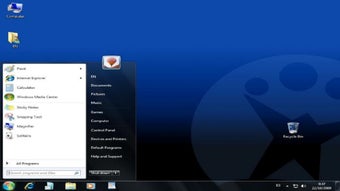Windows 7 - Legendary OS
Screenshots
Windows 7, the successor to Windows Vista, was released in 2009, marking a significant milestone in the evolution of Microsoft's operating systems. Renowned for its stability, performance improvements, and user-friendly features, Windows 7 quickly became a favorite among users worldwide.
Innovative features back in the day
Windows 7 introduced several groundbreaking features that set it apart from its predecessors:
- Taskbar Enhancements: The redesigned taskbar made navigation a breeze. Users could now pin their favorite programs for quick access, preview open windows by hovering over taskbar icons, and access jump lists for frequently used tasks within applications.
- Improved Performance: Windows 7 was optimized for speed and efficiency. With faster boot times, better resource management, and overall responsiveness, users experienced a smoother computing experience.
- Libraries: Managing files became more intuitive with Libraries, allowing users to organize and access files from multiple locations seamlessly.
- Windows Touch: While touchscreen technology was still in its infancy, Windows 7 laid the groundwork for future touch-enabled devices with improved touch support.
- HomeGroup: Sharing files and media across a network became simpler with HomeGroup, streamlining the home networking experience.
- Improved Aero Interface: Building upon the Aero interface introduced in Vista, Windows 7 introduced features like Aero Peek and Aero Snap, enhancing the visual experience and window management.
- BitLocker To Go: Data security received a boost with BitLocker To Go, extending encryption capabilities to removable storage devices for enhanced protection.
- Improved Backup and Restore: Windows 7 revamped the backup and restore utility, making it easier for users to safeguard their important files and system settings.
- Action Center: The centralized hub for notifications and system messages provided users with timely alerts about security issues and maintenance tasks.
- Windows Search: Finding files and programs became faster and more efficient with the improved Windows Search functionality.
These features collectively contributed to Windows 7's widespread adoption and cemented its position as a significant improvement over its predecessor, Windows Vista.
Upgrades from Vista
Windows 7 brought a host of upgrades and enhancements over Vista, including:
- Internet Explorer 8: Enhanced browsing experience with the latest version of Internet Explorer.
- .NET Framework 3.5 SP1: Improved support for developing and running applications.
- Internet Information Services (IIS) 7.5: Enhanced web server capabilities for hosting websites and web applications.
- Windows Installer 5.0: Streamlined software installation process with more control over settings and permissions.
- Sticky Notes: Revamped Sticky Notes application with new taskbar features and full-text search functionality.
- Resource Monitor: Improved monitoring capabilities for system resources, including RAM usage and network activity.
- Microsoft Magnifier: Accessibility utility revamped with full-screen zoom feature and improved functionality for low vision users.
- Paint, Calculator, WordPad: Updated with new features and a Ribbon interface for improved usability.
These upgrades further solidified Windows 7's reputation as a robust and feature-rich operating system, catering to the diverse needs of users across the globe.


